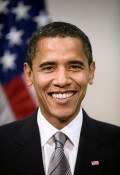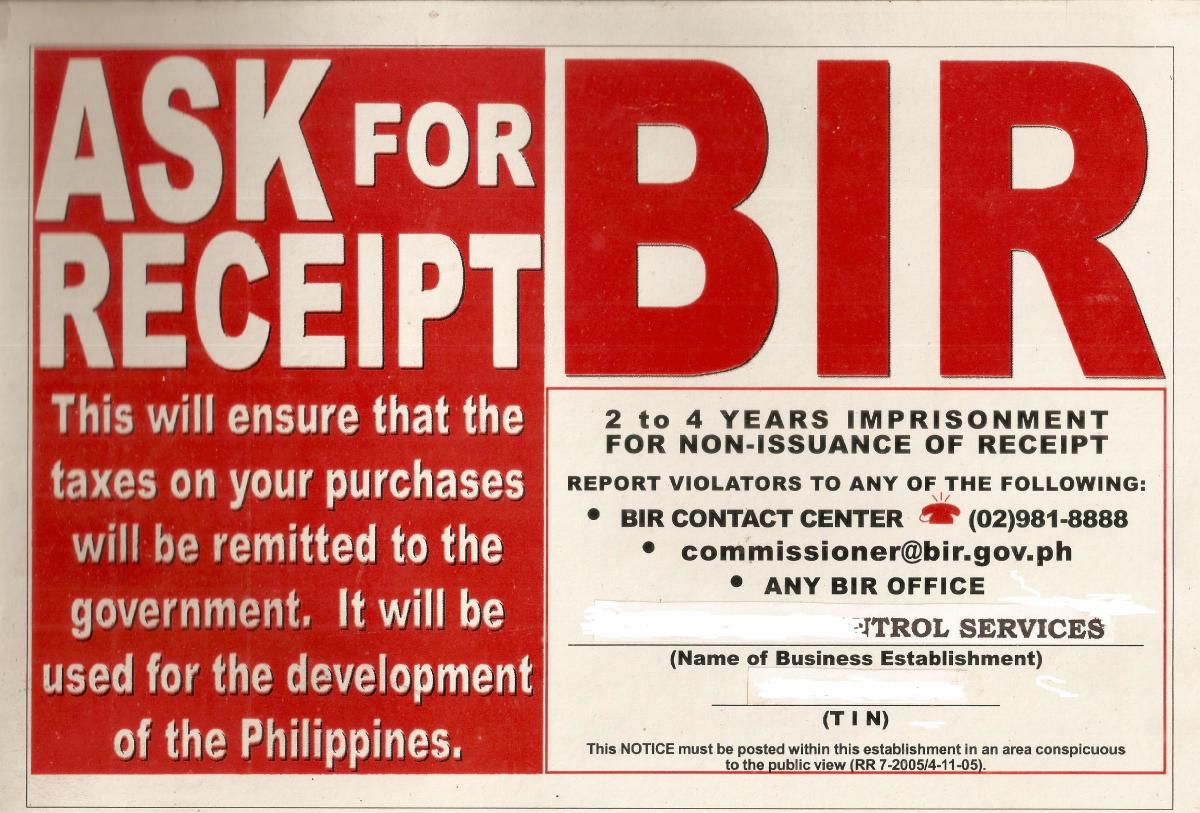Senate Majority Leaders Continue to Pull the Trigger on the Filibuster Nuclear Option
3rd VICE PRESIDENT AARON BURR
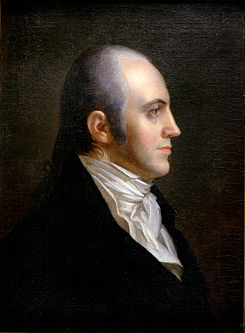
Update
I firmly believe in the filibuster as a way to protect the minority. At the time it was created, the hope was that the Senate would actually be populated by wise, experienced men (and later women) who had the best interest of the nation at heart. As is easily seen in this last 25 or so years, beginning in 1994, the fabric of the Senate has been torn asunder by ever increasing extreme partisanship. And, from where I sit, my observation is that it primarily comes from the right side of the aisle (I can't say the same for the House, there seems to be extreme partisans infecting both parties there).
Partisanship is not new to the Senate, it has flared up many times over the course of our history. But one of the defenses against that was the filibuster - until Sen. Mitch McConnell (R-KY). He abused the filibuster, in my opinion, so terribly when the Republicans were in the minority, that, in a moment of weakness, the majority leader, Sen. Harry Reid (D-NV) poked a hole in the dam, as it were. And it has been widening ever since, with the protections against majority abuse rushing out at greater and greater rates.
The blame is, again in my opinion, fairly spread to both sides. Had not McConnell abused the filibuster, Reid would not have forced through changes ending the filibuster for the appointment cabinet picks and lower court judges, the appointments McConnell had virtually stopped from happening. Had not Reid gotten weak and changed the rules, the protection of the minority would still be in tact - and the Democrats wouldn't being paying such a high price in having the courts, including the Supreme Court, packed with often unqualified partisan conservatives.
I doubt the genie can ever be put back in the bottle. Even now, several of the former candidates for the 2020 presidential nomination proposed ending the filibuster entirely. Even former Vice President Joe Biden, the eventual winner, has indicated he is open to such a terrible move if he becomes president. That said, I hope they can avoid such a self-destructive outcome.
FILIBUSTERS WERE NOT WRITTEN INTO THE CONSTITUTION
TWO HUNDRED AND SEVEN YEARS AGO, in 1806, the United States Senate created the rule establishing the filibuster, not realizing the unintended consequences that would result two centuries later. Vice President Aaron Burr noted, in 1806, that the Senate's current rule for moving from debate to a vote, created in 1789, was ineffective and redundant, suggesting that it be eliminated. Instead, the Senate established the filibuster rule, to protect the rights of the minority, unlike how the House did business ... and then didn't use it for 30 years and then only as a threat. Then, on November 21, 2013, Senate Majority Leader Harry Reid, frustrated with the abuse of the rule, led a historic move to take the ability to filibuster off-the-table for the confirmation of executive and lower court appointments. Let's review the history before getting back to why.
At the time the filibuster rule went into effect, its impact was absolute; if a Senator, or a group of them wanted to kill a bill, all they had to do was talk about anything they like for as long as is needed; further, while the filibuster was going on, no other Senate business could be accomplished. After anti-war Senators successfully used the filibuster to stop President Wilson from arming merchant ships to protect themselves from submarine warfare during WW I, Wilson convinced the Democratic Senate majority to modify the filibuster rule to allow for cloture, the first use of the "nuclear option".
Cloture, the ability to end debate, required a 2/3rds supermajority of those voting under the new 1917 rule. In response to looming civil rights legislations, Conservative and Limited State Liberals changed the rule to require 2/3rds of the full Senate membership (67 votes in today's Senate) for cloture; a much tougher standard. That rule was reversed in 1959 back to the current 2/3s of those voting.
Until the early 1970s, a filibuster would stop all Senate activity (a rule I think they need to go back to). After that, a "two-track" rule was passed which allowed, under certain conditions, the Senate to continue to do business while the filibuster was still going on; this was a sea change regarding the filibuster process and probably the primary reason the filibuster is so widely abused today ... one of those unintended consequences. Then, in 1975, the progressive Democrat Senate changed the filibuster rule again to require only 3/5ths of the Senator's "sworn", normally about 60, to invoke cloture. At the same time, the rule allowed "virtual" filibustering where actually "talking" was no longer required; a new feature that furthered amplified the probably of abuse in the future.
This last rule stood until November 21, 2013 when Senate Majority Leader Harry Reid invoked the "nuclear option or constitutional option" for lower court judicial and executive appointments. As a consequence of this move is these kinds nominations (save for the Supreme Court) out of the realm of the filibuster and into world of up or down votes.
Fast forward to January 2016 when Justice Antonin Scalia died suddenly taking away a solid conservative vote on the Supreme Court. Senate Majority Leader Mitch McConnell (R-KY) through the intent of the Constitution out the window and refused to allow then President Obama's nominee to replace Scalia with Judge Merrick Garland any hearings or a confirmation vote in the Senate; this began a string of unprecedented actions by political leaders and wannabes that led to the election of Donald Trump as president and the confirmation of arch-conservative Judge Neil Gorsuch to the Supreme Court. But to do that, McConnell had to invoke the nuclear option once again and eliminate the filibuster for Supreme Court nominees, that Senator Reid had left in place, as well as judges and cabinet appointees.
The only filibuster rule still in effect is the one for normal legislation that isn't circumvented by appealing to budget reconciliation in certain circumstances, something the Republicans are trying to use often.
SENATOR STROM THURMOND HOLDS THE FILIBUSTER RECORD
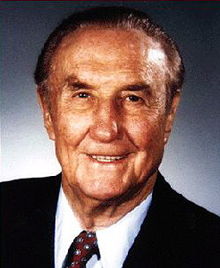
The following are a sample of very long filibusters:
- In 1930, Active State Liberal Senator Huey Long (D-LA) spoke for 15 hours and 30 minutes in order to promote his progressive agenda.
- In 1946, Conservative and Minimal State Liberal southern Senators killed a bill that would have created a permanent Fair Employment Practices Committee (FEPC) to prevent discrimination in the work place. These Senators filibustered for weeks to successfully kill this bill
- In 1957, the record for a single Senator to filibuster was set by Conservative Senator Strom Thurmond (D-SC) in his 24 hour and 18 minute successful battle against the Civil Rights Act of 1957. (When the 1964 Civil Rights Act was passed, Thurmond switched Parties and became a Conservative Republican.)
- Senators William Proxmire (D-WI) and Alfonse D'Amato (R-NY), in 1981, 1986, and 1992, respectively filibustered various revenue bills. Proxmire spent 19 hours and 16 minutes arguing against the Debt Ceiling increase. D'Amato argued for 23 hours and 30 minutes (second longest) and 15 hours and 14 minutes railing against Defence Appropriation Act and Revenue Act, respectively.
- Talking filibusters were first used regarding Presidential appointments by Senator Rand Paul in 12 hours and 52 minutes trying to block the nomination of John Brennan to head the CIA and Majority Leader Harry Reid, in 2003, for 8 hours and 39 minutes during a debate on judicial nominations.
As can be seen, these rules make it extremely hard to actually invoke cloture. In fact, until the filibuster against the 1964 Civil Rights Act was broken by cloture, only one other filibuster had the same fate since 1927.
TO THE LATEST CHANGES TO THE FILIBUSTER RULE
PRIOR TO 1970, FILIBUSTERS WERE RARE, regardless of the topic they addressed. Until that time the Senate's minority party chose its fights carefully, keep in mind until then, filibustering brought Senate operations to a halt, which may have negative consequences with public opinion. In all of the 1800s, less than 24 filibusters were attempted. In the 1930s, a filibuster was attempted twice by Conservatives to block federal anti-lynching legislation. In the 1950s, there were two more attempts and there were four under Kennedy in the early 60s. The natives got restless from that point on. The number of filibusters more than doubled under LBJ. Until now, however, what filibusters did occur were mainly by those simply wanting to make a point, and not actually block Senate activity, as well as white southerners determined to salvage racial segregation; that, fortunately, ended with the failed attempt to kill the Civil Rights Act of 1964,
After the major civil rights legislation had passed, the reason for using a filibuster became varied and they also became an accepted tool for the minority party to influence legislation, something that is impossible in the House without the acquiescence of the House Leader. During the Nixon administration, the count went up to around 20 a year, peaking at around 40 near the end of the Vietnam War (keep in mind, the Republicans were the minority party). From there they declined through the Ford and Carter presidencies, but began to rise once more with the election of President Reagan, where Democrats had control of the Senate all but the first two years. Filibusters peaked in 1988 with over 50 and then fell back until Clinton was elected.
By then, the Republicans in office have become quite Conservative and partisan, unlike their brethren in the decades earlier. Further, you still had the southern Conservative Democrats who were only a couple of years from migrating to the Republican Party. With the election of Clinton, Republicans filed filibuster after filibuster until they gained the majority in 1995. In those two years, the Republican filibuster effort rose from about 25 to over 80 by 1995.
With Democrats in the minority, filibusters declined to around 60 per session, only to skyrocket to over 140 in 2008 once the Democrats became the majority once more in 2007. Finally, with President Obama, the Republicans have kept up the abuse by staying above 115 filibusters per session through 2012, where their stated intent is to thwart virtually all of President Obama's initiatives.

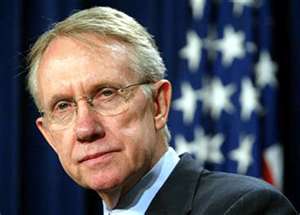
BOOM!!
MAJORITY LEADER REID (D-NV) WAS NOT THE FIRST to threaten to use the so called "nuclear option", but is the first leader to use it. Leader William Frist,(R-TN) in 2005, was the first to propose the maneuver Reid finally used November 21, 2013. It was when Frist proposed the idea when it picked up the moniker of "nuclear option". (It is also known as the "constitutional option" because the constitution allows the Senate and House to make their own rules.) Ostensibly, both Senators considered this option because the filibustering of judicial and executive nominations got out of hand.
As Ronald Reagan took office, ushering in the Conservative era, there were only four vacancies in the Circuit Courts. It doesn't look like the Democrats made any serious attempt to frustrate President's judicial nominations. When they did object, they simply did it by not bringing Reagan's appointees up for a vote through Committee; but it seems they used that method sparingly. Nevertheless, Reagan ended his first term with 26 vacancies by 1984 (albeit only half were by delaying or obstruction), The next fours years were fairly mild and Reagan ended up with only 10 vacancies (at least four of those fell victim to the "Thurmond Rule ,explained below) on the Circuit by 1988; I am assuming the other Federal Court seats, e.g., District Courts, followed the same pattern.
All told over the eight years, Reagan had 14 failed appointments, two of which were withdrawn before formally asking the Senate for their Advice and Consent. Republicans were responsible for 2 of the failures because the nominees were "too liberal"; 1 was killed because the nominee received a unanimous vote of "not qualified" from the American Bar Association, (the only appointee in history to receive such a condemnation); 1 was withdrawn because of public outcry over the nominee's past affiliation with the segregationist States Rights Party; and at least four more were thwarted by the "Thurmond Rule" which both Parties frequently, but not always, observe. The "Thurmond Rule" informally states than no confirmations will be made during the last six months of a lame-duck Presidency. One other nominee was killed in a bipartisan manner. Consequently, the Democrats were responsible for outright blocking only 5 1/2 of Reagan's appointments during their regular sessions. All together, however, Reagan set a record of confirmed appointments at 376, four of which were to the Supreme Court including one Chief Justice.
President Bush 41, either appointed those held over from Reagan due to the "Thurmond Rule" or substituted his own choices, all of whom were confirmed. However, Bush did nominate 8 justices during the last 6 months of his Presidency (including John Roberts who his son, Bush 43, appointed as the Chief Justice of the Supreme Court), the Democrats chose to let those lapse without action. Only 2 of Bush 41's appointments were defeated in Committee. At the end of his term, there were 18 vacancies when President Clinton took office. All in all, President H. W. Bush successfully appointed 152 federal judgeships, 2 of which were Supreme Court Justices.
42
It appears that the Republicans are responsible for setting off the "confirmation wars", although it was not by filibuster. Like the Democrats before them, the Republicans used their 6 years of majority in the Senate to kill many of President Clinton's judicial appointment. Unlike Presidents Reagan and Bush 43, Clinton was actually frustrated in his appointments; in the end there were a record 25 empty seats out of 179 (14%) on the Circuit by the time Bush 43 assumed responsibility for the Nation; it also took an average of 238 days, compared to 60 for President Reagan, to get a nomination confirmed. Besides the 42 Federal District Court judges the Republicans refused to confirm they also did damage to the Circuit Court as well, in summary they:
- Stalled and let die in Committee 9 nominee's
- Put on "Hold" - another 7
- One appointment withdrew because of a scandal that developed
- One was killed due to a political ploy by Presidential hopeful Senate Majority Leader Bob Dole
- and 4 died due to the "Thurmond Rule", for a total of 22 failed confirmations to the Federal Circuit Courts, or 25% of is choices.
Even so, President Clinton did win confirmations for 2 Supreme Court Justices, 66 Circuit Court justices, and 305 Federal District Court judges.
Democrats continued the nomination wars, initially by stalling them in Committee, since the Democrats controlled the Senate the first two years. When Republicans regained Senate control by the slim margin of 51-49, Democrats made the decision to use, for the first time in a significant way, the filibuster in order to to prevent what they feared would end up being a highly conservative judiciary.
ENTER THE FILIBUSTER AS A CONFIRMATION WEAPON
THE DEMOCRATS USE OF THE FILIBUSTER to block President Bush's nominations, while unprecedented in its scope, was also of limited duration. The use of the filibuster by the Democrats began in 2003, when they lost control of the Senate, and ended in 2005.
It was during this period that Senator Frist, first proposed the use of the "nuclear option", By 2005 he was ready to use it because the Democrats had tied up 10 appellate court nominations Bush had submitted. There was great fear among Democrats and moderate Republicans that Frist was going to pull the trigger. As a consequence of this fear, seven Democrats and seven Republicans, the so-called Gang of 14, agreed that they would vote for for cloture on the Democratic filibuster and would vote against Frist if he tried to change the Senate rules (the 14 votes would have left Frist 3 votes short of the majority he needed). When the dust settled, there were only 12 openings by the time Obama came on the scene; even so, it took an astounding, and embarrassing 355 days for confirmation.
During the eight years Bush served as President, 16 of Appellate Court appointments failed to make it through the political process. Of them:
- 1 died from a scandal
- 1 died from a Republican hold
- 2 fell victim to the "Thurmond Rule"
- 7 were left hanging in committee
- 5 were filibustered to death!
A much better record than Clinton was allowed to have.
BOOM!!!
SO WHAT MADE SENATE MAJORITY LEADER PULL THE TRIGGER?Why now and why has nobody actually pulled it in the past? In my opinion it was because Senate Minority Leader McConnell left Senator Reid no choice and there there weren't enough moderates Republicans left to form another Gang of 14. Starting in 2009, Conservative Republicans picked up where they left off in 2000. By the time Senator Reid pulled the trigger, there were 59 executive and 17 judicial nominations on hold with three nominees to the D.C. District Court having just been filibustered. For Obama, the Republicans have held up confirmation for an average of 257 days; and it would have gotten longer save for Senator Reid's momentus action. In total, according to a recent Politifact count, 79 Obama nominations have been or are being blocked by Conservatives. That doesn't sound like a whole lot until you compare it with the fact that all Presidents before him had a combined total of 68!! No wonder the Democrats finally gave up trying to compromise with the Republicans, I would have to, maybe sooner.
Both sides are guilty as sin in using our Federal Judicial system as tokens in a political chess game, a historic miscarriage of political power by any standard. But, prior to 2009, each time it came to a head, compromises were found and most of the President's nominees were finally confirmed. That came to an end with the 2010 Republican Senate cohort led by Minority Leader Mitch McConnell (R-KY).
Granted, a few attempts were made which allowed a few of Obama's nominees through, but it was apparent it wasn't going to happen again; you see, tyranny by the minority was firmly established and something had to give. While there weren't that many judicial appoints in the balance, only 17(lol, less than Clinton but more than Bush), there were 59 executive appointments being held up, some ever since Obama took office. That is a lot of high level leadership jobs to have vacant and will have serious consequences on the ability of the Executive Branch to function; something that I am sure was in the Republican game plan. Very few, if any, of the nominations were being blocked because the nominee wasn't suited to the position. They were being filibustered simply because they were President Obama's choices, there can be no other reason. The Republicans have been very upfront in voicing their desire to see President Obama fail and to do all they can to just that.
The problem, of course, is that it is America who suffers the consequences of their intransigence, not just President Obama and his administration. Having watched the damage accumulate from this and the Conservatives other efforts to derail Obama, I can only surmise that they don't give a damn about America. It seems to me the only things that are important are destroying the Presidency and their hard line, unbending ideology, and I have feeling that Senator Reid came to the same conclusion and decided to do something about it.
Notice Reid limited the rule change to executive and lower court appointments only; he left alone all the other types of bills which Republicans have also been holding up; in my opinion that is the way it should have always been. Only the ones that impacted the operation of the government were included, that was no accident, I suspect.
DID SENATOR REID AND THE DEMOCRATS DO THE RIGHT THING FOR THE COUNTRY?
DEMOGRAPHIC SURVEY# 1
DO YOU LEAN TO
DEMOGRAPHIC SURVEY# 2
ARE YOU
RELATED LINKS
- Do You Know Who You Really Are? Socialist, Liberal, ...
- Myers-Briggs (Personality) Type Inventory (MBTI) - A...
The MBTI has always fascinated me because it is 1) pretty accurate and 2) very informative about who we think we are and how those perceptions of ourselves interact with others and their perceptions. - On Principle and Pragmatism Ib - U.S. Constitutional...
What lays behind the creation of U.S. Constitution is a fascinating story and James Madison chronicled it all. This series of hubs presents the essence of Madison's - American History IV: Founded in Liberalism, Conserva...
Few people know that America was founded in the concepts of Liberalism, 17th and 18th century Liberal, Conservative and Socialist thought also played an important part in American history as well


